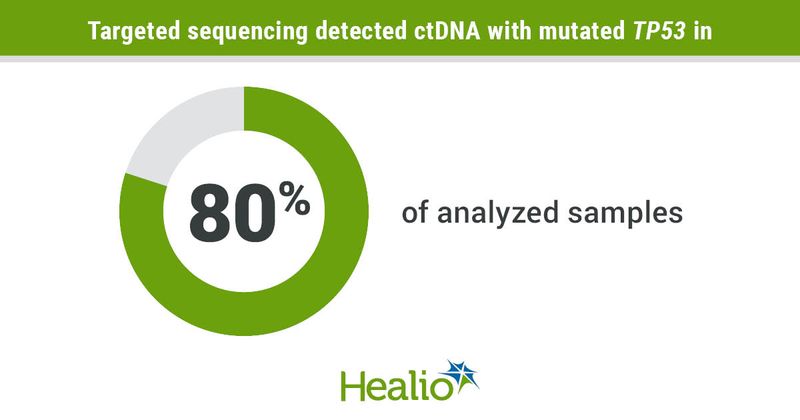Targeted sequencing promising for molecular profiling of HNSCC
DALLAS — Targeted sequencing appears to be a promising strategy for molecular profiling of head and neck squamous cell carcinoma, according to study results.
The findings — presented at American Head & Neck Society Annual Meeting — showed a correlation between detection of circulating tumor DNA (ctDNA) and pathological adverse features.

This indicates the potential clinical utility of ctDNA-based molecular profiling for identification of patients with head and neck squamous cell carcinoma (HNSCC) who might derive benefit from more intense treatments, Liyona Kampel, MD, PhD, resident at Tel Aviv Sourasky Medical Center in Israel, and colleagues concluded.
“We got some contradicting evidence,” Kampel told Healio. “Currently, we can’t really say that this is a good marker for risk stratification because we found we can detect ctDNA for patients with both advanced-stage and early-stage disease.

“We need to conduct further study on the mechanisms that modulate the ctDNA release so we can better understand how to utilize this important biomarker,” Kampel added. “I’m very confident we will get there.”
Background and methods
Advances in molecular and genetic sequencing has made it easier to detect and analyze ctDNA, providing important insights into the genetic signatures of tumors.
“This has given rise to the concept of liquid biopsy,” Kampel said. “There are various applications of ctDNA under investigation, such as detection of minimal residual disease and monitoring for treatment response.”
Kampel and colleagues aimed to assess ctDNA as a biomarker for risk stratification for HNSCC. They hypothesized that detectable ctDNA at the time of tumor resection may indicate more aggressive or more disseminated disease.
Researchers used a targeted sequencing approach to test this hypothesis, focusing on the TP53 gene — the most highly mutated gene in HNSCC.
Kampel and colleagues assessed tumors from 45 patients (median age, 68 years; range, 35-90) with newly diagnosed HNSCC treated with upfront surgical resection at a referral tertiary medical center from 2014 to 2021.
One-third (33%) of patients had stage IV disease, followed by 9% with stage III, 31% with stage II and 7% with stage I.
Tumor sites included oral cavity (87%), larynx (9%), oropharynx (2%) and nasal cavity (2%).
Researchers assessed for tumor DNA extraction, and they performed sequencing of TP53 coding regions.
Key findings
Researchers identified somatic TP53 mutations among 82% of samples.
They then examined circulating DNA for presence of tumor-specific mutations. They extracted cell-free DNA from plasma samples (n = 20), performed polymerase chain reaction amplification on the amplicon containing the tumor-specific alteration, and performed deep sequencing.
This approach identified tumor-specific TP53 mutations in 16 patients (80%).
Variable ctDNA detection rates ranging from 40% to 100% have been reported in the literature, with differences attributed to sequencing methodology, Kampel said.
“In our study, we used a targeted sequencing approach, meaning we utilized the specific mutation to guide our search for ctDNA, and it resulted in an 80% detection rate,” Kampel said.
Kampel and colleagues identified only one variable — regional spread of disease — significantly associated with detectable ctDNA (N stage 1, P = 0.04).
Results showed no association between detectable ctDNA and the other variables assessed, which included TNM stage III/IV, T stage (T3/T4), perineural invasion or depth of invasion greater than 10 mm.
“We noted a trend toward worse DFS among patients who had ctDNA detected but it did not reach statistical significance, probably due to the small number of patients included,” Kampel said.

